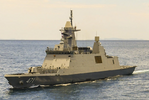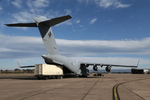Werewolf
Meme Thief
- Thread starter
- #201
Update on Britain, Japan and Italy working together on a 6th generation fighter plane:

 ukdefencejournal.org.uk
ukdefencejournal.org.uk

Britain unveils new stealth fighter design
The three nations of the Global Combat Air Programme (GCAP) – the UK, Italy, and Japan – have unveiled a new concept model of their next-generation combat aircraft. Set to be in service by 2035, this aircraft will be among the world's most advanced, fighter jets.
 ukdefencejournal.org.uk
ukdefencejournal.org.uk


























